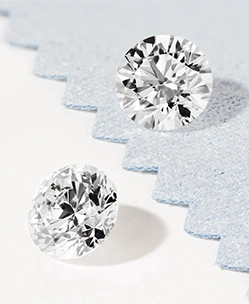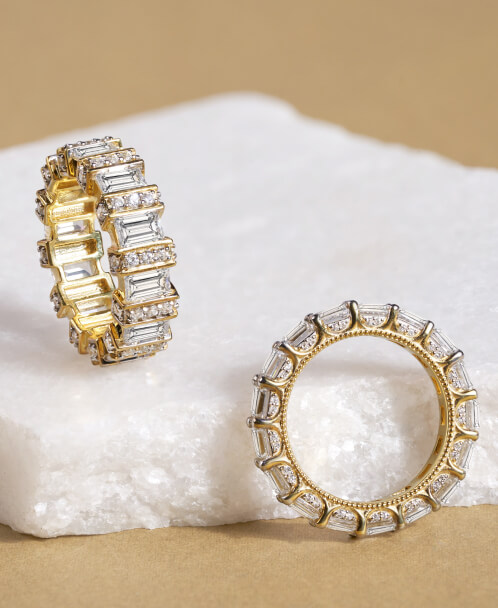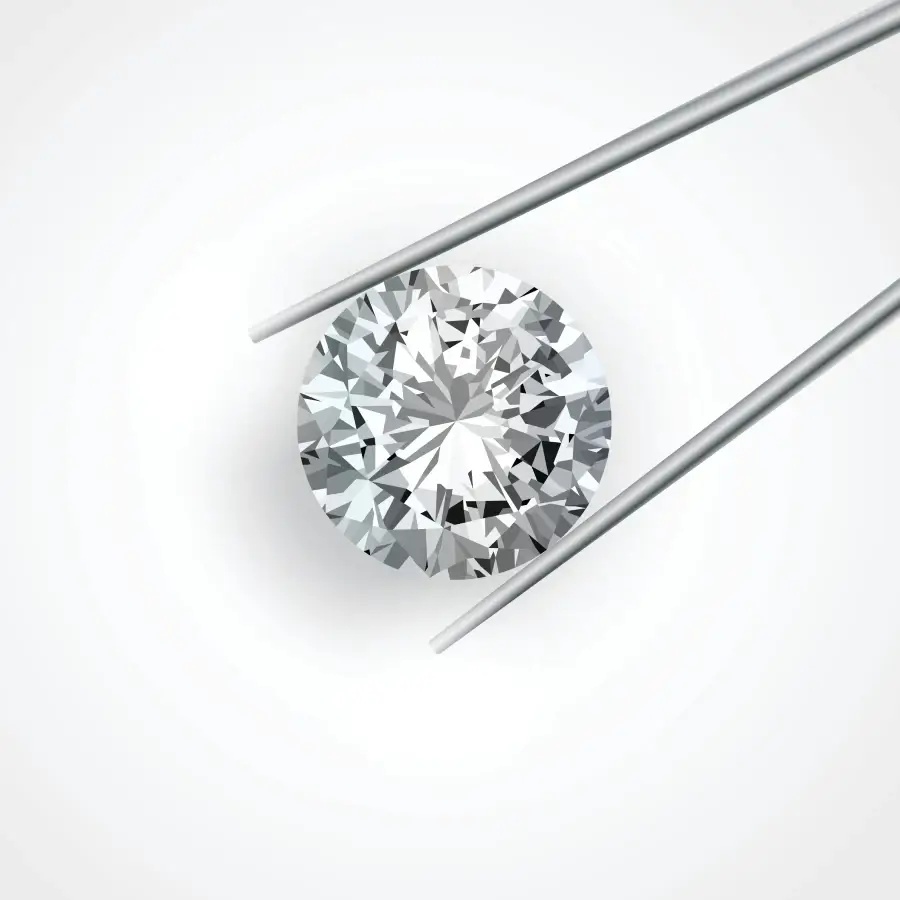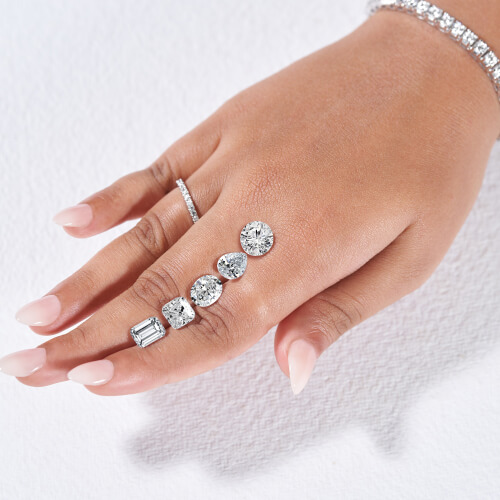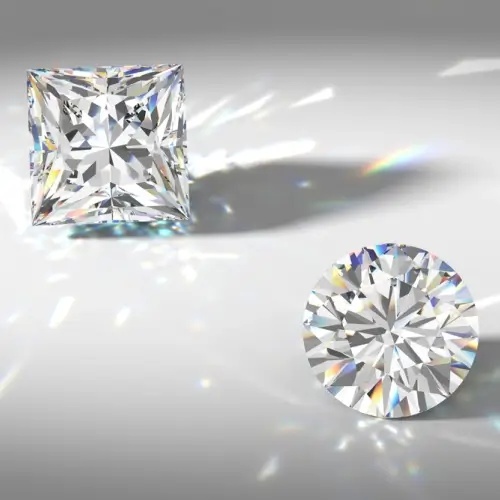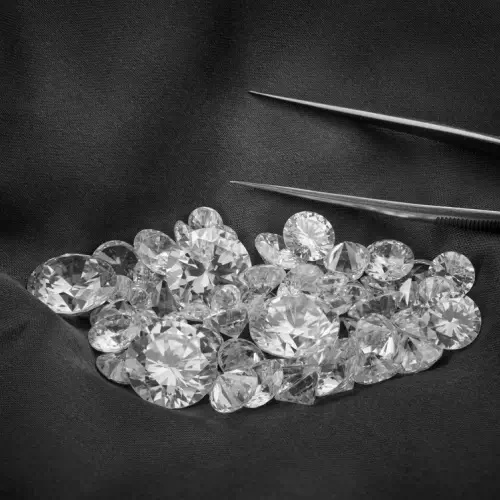Diamonds have been revered for their beauty and symbolism for centuries, but in recent years, lab grown diamonds have ushered a new era for the traditional diamond industry. As consumers become more conscious about ethical and environmental concerns, lab grown diamonds are gaining popularity as a sustainable and socially responsible alternative to naturally mined diamonds.
But how do they compare to natural stones? Are they as brilliant and valuable? Are they truly game-changers in the jewelry industry? Join us as we delve into the intriguing nuances of lab grown vs natural diamonds, and uncover the truth behind these stunning gems. Get ready to discover a new perspective on diamonds, where science meets sparkle and innovation shines bright!
This blog post will explore the captivating debate between lab grown diamonds vs natural diamonds, examining key factors such as sourcing, sustainability, affordability, quality, and more.
TABLE OF CONTENT
Nature Vs. Nurture
Under intense heat and pressure for millions of years, diamonds are created deep in the Earth's crust. They are made of carbon atoms arranged in a unique crystal lattice structure, giving them exceptional hardness, brilliance, and rare properties. Natural diamonds are mined from the Earth's crust, take billions of years to form and are found in various parts of the world, including Africa, Russia, Canada, and Australia.

SHOP LAB DIAMONDS
Conversely, lab created diamonds are grown in a lab in a controlled environment using advanced technology that replicates the natural diamond formation process. These are produced through two primary techniques, popularly known as HPHT and CVD. HPHT stands for High Pressure High Temperature and replicates the extreme high-pressure environment found in the Earth's crust, whereas CVD i.e. Chemical Vapor Deposition involves the deposition of carbon atoms onto a substrate through a gas mixture, leading to the formation of diamond crystals.
Although they originate differently, the chemical and optical characteristics of lab diamonds and natural diamonds are practically indistinguishable. Both types have the same crystal structure, hardness (rated ten on the Mohs scale), and optical characteristics. In fact, only expert gemologists can distinguish between lab grown vs natural diamonds through their specialized equipment. Lab grown diamonds are also graded and certified by reputable gemological institutes, such as the Gemological Institute of America (GIA) using the same criteria as natural diamonds, ensuring they meet the same quality standards for designing any piece of jewelry; for example, a diamond engagement ring.
Sustainability that Shines
One of the key differentiating factors between lab grown vs natural diamonds is their impact on the environment. Traditional diamond mining has been associated with significant environmental and social issues, including deforestation, soil erosion, water pollution, and disruption of local ecosystems. Diamond mines also require large amounts of energy for extraction and processing, contributing to carbon emissions and climate change.

In contrast, lab grown diamonds are created in a controlled environment using renewable energy sources and minimal water usage, making them a more sustainable option. When considering lab grown vs natural diamonds, the former does not require large-scale mining, which can be invasive and destructive to fragile ecosystems. According to a report by Frost & Sullivan, lab grown diamonds have significantly less environmental impact compared to natural diamonds, including lower carbon emissions, energy usage, and water usage.
Lab grown diamonds also avoid the social and ethical concerns associated with natural diamonds. Natural diamonds have been linked to issues such as human rights abuses, child labor, forced labor, and violence against workers.
In contrast, lab grown diamonds are created without any involvement in unethical practices. They are not associated with any social or ethical concerns, making them a socially responsible choice for those who value ethical sourcing and want to ensure that their diamond jewelry is free from unethical practices.
Embracing Innovation
Lab grown diamonds are not only disrupting the traditional diamond industry, but they are also driving innovation and shaping the future of diamonds. The advancement of technology has allowed for more precise control over the diamond-growing process, resulting in diamonds with unique colors and characteristics that are not commonly found in natural diamonds. Lab grown diamonds can be created in various colors, including yellow, pink, blue, and even fancy colors like orange and green, offering endless possibilities for creativity and personalization in diamond jewelry.
Furthermore, lab grown diamonds are also being used in cutting-edge applications beyond jewelry. Their exceptional properties, such as high thermal conductivity and optical transparency make them ideal for use in industries like electronics, medical imaging, and quantum computing. Lab grown diamonds are driving innovation in these fields and opening up new possibilities for the use of diamonds in technology and science.
The Future of Diamonds
As the world becomes more conscious of sustainability, ethics, and innovation, the demand for lab grown diamonds is on the rise. They offer a sustainable and affordable alternative to natural diamonds without compromising quality, beauty, or value. Lab grown diamonds also drive innovation and shape the future of diamonds, offering endless possibilities for creativity and personalization.

However, it's important to note that the choice between lab grown vs natural diamonds ultimately depends on personal preferences and values. Some people may still prefer the allure and symbolism of natural diamonds, while others may find the sustainability and affordability of lab grown diamonds more appealing. It's crucial for consumers to educate themselves, ask questions, and make an informed choice when it comes to buying diamonds, regardless of their origin - be it lab grown diamonds or natural diamonds.
In our opinion, when it comes to lab grown vs natural diamonds, lab diamonds are a game-changer in the diamond industry, introducing a fresh perspective on diamonds in the jewelry sector, and undoubtedly an excellent alternative to natural diamonds. With the rise of lab grown diamonds, consumers now have more choices than ever and it's up to them to make a decision that aligns with their values and priorities. The future of diamonds is evolving and lab grown diamonds are leading the way towards a more innovative diamond industry.
At Friendly Diamonds, we believe beautiful jewelry shouldn't come at the cost of the ethics or your entire savings. Hence, we only offer stunning lab grown diamond jewelry that is sustainable, ethical, and budget-friendly. Our lab grown diamonds are created using cutting-edge technology in a controlled environment without any harm to the environment or communities. We use renewable energy sources and minimal water usage, ensuring our diamonds are sustainably produced with a low carbon footprint.
But that's not all - our commitment to affordability means you can enjoy a diamond's sparkle without breaking the bank. Our lab grown diamonds are priced significantly lower than natural diamonds, making them an accessible option for everyone who values ethical sourcing and sustainability. With us, you can wear your jewelry with pride, knowing that you are making a conscious choice for the planet and supporting a brand that prioritizes sustainability and affordability. Join us in creating a brighter, more sustainable future with our dazzling lab grown diamond jewelry. Explore our collection today and experience the supremacy of sustainable brilliance with Friendly Diamonds!
